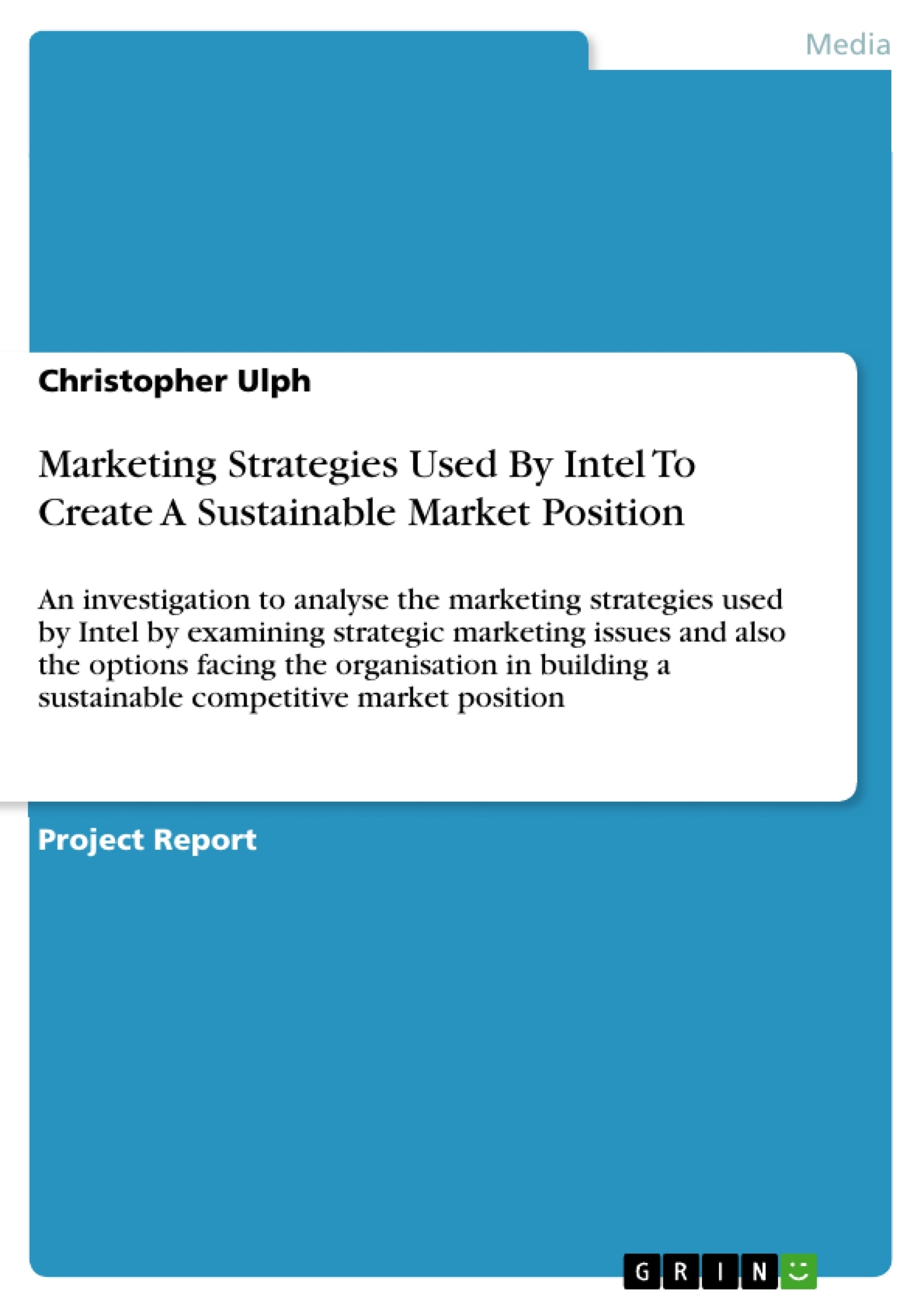An investigation to analyse the marketing strategies used by Intel by examining strategic marketing issues and also the options facing the organisation in building a sustainable competitive market position.
Table of Contents
- EXECUTIVE SUMMARY
- TERMINOLOGY/ POINTS OF REFERENCE USED
- INTRODUCTION
- STRATEGIC MARKETING ISSUES FACED BY INTEL
- FUTURE OPTIONS FACING INTEL
- CONCLUSION
Objectives and Key Themes
This report investigates Intel's marketing strategies in the microprocessor industry, examining how they tackle strategic marketing issues and build a sustainable competitive market position. The methodology employed uses a thematic and pragmatic view of the industry, analyzing recent marketing campaigns and techniques, identifying business issues, and evaluating Intel's options for market sustainability.
- Ingredient co-branding as a key marketing strategy to reach B2C consumers
- The role of Research & Development (R&D) investment in maintaining Intel's competitive advantage
- The importance of customer relationship management and understanding changing market trends
- The growing mobile market and the need for power-efficient processors
- The role of security in the future of computing and Intel's diversification into the security industry
Chapter Summaries
- EXECUTIVE SUMMARY: Provides a brief overview of the report's purpose and methodology, highlighting Intel's unique marketing approach in the microprocessor industry.
- TERMINOLOGY/ POINTS OF REFERENCE USED: Defines key terms and points of reference used throughout the report, ensuring clarity and understanding.
- INTRODUCTION: Introduces Intel as a global brand and leader in microprocessor manufacturing, outlining its market share and competitive landscape.
- STRATEGIC MARKETING ISSUES FACED BY INTEL: Examines Intel's lack of direct consumer contact and its use of ingredient co-branding to reach B2C customers. This section analyzes the success of Intel's co-branding campaigns with companies like Hewlett Packard and the benefits of this strategy.
- FUTURE OPTIONS FACING INTEL: Discusses the importance of continued R&D investment to maintain Intel's competitive advantage and the need to adapt to emerging trends in mobile computing and security. This section explores potential threats and opportunities for Intel, including the rise of competitors like ARM Holdings and the growing demand for cloud computing.
Keywords
This report focuses on the marketing strategies of Intel Corporation, particularly ingredient co-branding, research and development investment, customer relationship management, mobile computing, power efficiency, cloud computing, and security.
- Quote paper
- Christopher Ulph (Author), 2010, Marketing Strategies Used By Intel To Create A Sustainable Market Position, Munich, GRIN Verlag, https://www.grin.com/document/166297




